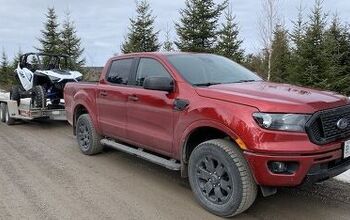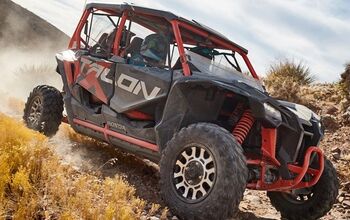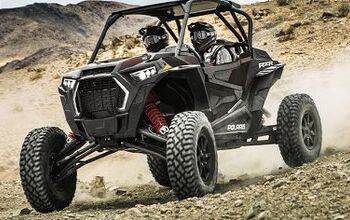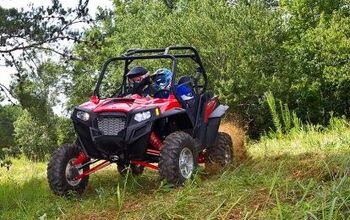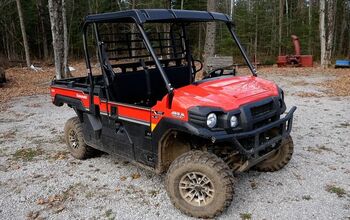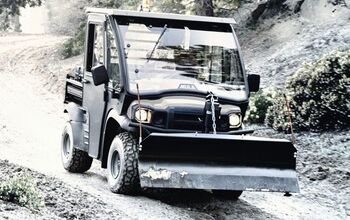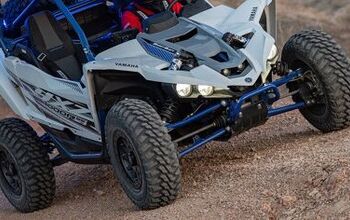2008 Polaris Shareholders Meeting
With a very soft US economy, gas prices soaring higher every day, and family discretionary dollars shrinking, you would think a company that builds recreation-oriented powersports products might be pessimistic about its future. But if Minnesota-based Polaris Industries Inc. has negative thoughts, company officials hid it well at Polaris’ May 2008 annual shareholders meeting.
In fact, Polaris executives were very upbeat and looking to grow in a down market. Chief executive officer Tom Tiller, who had already announced that he would leave the company by the end of the year, said that Polaris could be a US$5 billion company in the years ahead.
This optimistic forecast comes off a solid year of success in 2007, which was in sharp contrast to 2006 sales results. Last year’s annual meeting saw the first non-growth year in Tiller’s 10-year reign of overseeing Polaris. Where sales for 2006 fell to US$1.66 billion, 2007 saw a return to growth of 7% versus the previous year.
“Polaris gained market share in every business group for the first time ever in the company’s history,” explained Polaris president and chief operating officer Bennett Morgan.
With ‘momentum’ serving as the theme for this year’s annual meting, Morgan said that the strategies implemented last season to return to growth were “…working and we are continuing with the plans we’ve put in place.”
Polaris’ strategy is actually quite simple in concept, albeit much more difficult to achieve in execution. That strategy consists of ‘winning in the core,’ which is Polaris-speak for regaining market share and sales in snowmobiles and ATVs. Snowmobiles gained market and sales this past winter, thanks to the return of a more normal winter and a boom in snowfall. Entering the 2007-08 snow season, Polaris reduced inventory at the dealer level by as much as 40 per cent. That included cutting way back on production to help dealers balance the Polaris product between old and new units. Since Tiller took over at Polaris, snowmobiles, which once were the foundation of the company, have gone from representing 37 percent of total annual sales in 1997 to being just 10 percent of sales in 2007.
The Polaris ATV product line in 1997 accounted for 48% of total sales. Today ATVs reflect 67% of the company’s sales. That number for 2007 includes the fast-growing side-by-side market, which was a non-factor a decade earlier. ATVs alone were down 13% but overall sales were helped by the continued — and growing — strength of Polaris’ Ranger and Ranger RZR four-wheel products. Ranger side-by-side models are growth leaders in a growing market — in North America and other world markets.
Polaris’ strategy also includes paying close attention to detail to achieve ‘operational excellence’. This means that Polaris company-wide is committed to exceeding the end customers’ needs better than anyone in the industry.
This focus centers on quality, costs and speed. Polaris claimed that its ‘quality initiatives’ improved significantly in the past year and is seen in strong consumer word-of-mouth as well as being reflected in customer survey data, especially seen in responses to Polaris RZR and Victory Vision motorcycle post-purchase surveys.
The company announced that its system-wide costs and investments declined by 3% in 2007. Given as the reason were reductions in dealer and factory inventory, cost reductions in products and tooling and efficiencies with allocating capital. Polaris executives noted that gross margins expanded and productivity improved. Morgan and Tiller both emphasized that the cost initiatives would remain in place.
By eliminating waste and unnecessary steps, Polaris executives note that the company gained speed in streamlining processes and stated that this gain in speed led to getting its new Ranger Crew ATV to market more quickly. Polaris feels that this ability to create, manufacture and deliver product more quickly and efficiently will make the company more competitive in the world marketplace.
Once strictly a United States snowmobile company, Polaris has expanded its thinking in both product and reach. Even while snowmobile sales declined and ATVs came into play, Polaris under Tiller has broadened its position as a global player.
Polaris Chairman of the Board Greg Palen noted that Polaris’ global growth is expected to be expanded under Tiller’s successor, who has yet to be chosen. Palen noted that Tiller has agreed to assist his successor in a transition of CEOs, but that he will step down prior to the 2009 shareholders meeting.
Morgan told the shareholders attending this year’s meeting, “We think we can deliver outstanding financial growth by 2009 and beyond.”
He said that the company expects its side-by-side sales to grow between 4% and 7% by 2009. Although sales of ATVs are expected to remain flat or decline, he explained that Polaris is dominant in the side-by-side market and growth internationally should be strong, bringing profit growth through increased sales.
The return of winter across the North American snowbelt meant an increase in snowmobile sales and profitability. Polaris reports a significant growth with its snowmobile product line and indicated a major introduction of new product in the next few seasons.
“Polaris dealer inventory is the lowest in 10 years,” says Morgan. “Sales for 2007 were up 14 per cent and we expect to grow by low double digits in 2008.”
Morgan stated, “Parts, Garments & Accessories (PGA) may not be the sexiest business, but it is very important. It has the highest margins with up to 40% gross margin on some items.”
PGA represented 17% of Polaris’ total sales in 2007. This past year PGA group brought more than 200 new products to the market. There were 100 new accessories created for the Victory Vision touring motorcycle with another 75 products made available for the sporty Ranger RZR.
In summing up the company’s accomplishments and outlook for the immediate future, Morgan noted that Polaris is exceptionally strong in the company’s ATV and side-by-side markets.
“We have dominant product advantages in those markets,” says Morgan. “We own the ‘work’ class portion of the ATV market. And our investment in the sports segment led to us creating a ‘play’ platform in the RZR that has changed the industry. Even after a full year, the RZR has not caught up with demand yet!”
When Tom Tiller stood up for what would be his final address to the shareholders as CEO, he noted where Polaris had been as a company in 2007. Total sales were less than one billion dollars. In 2005 Polaris verged on being a two billion dollar company with US$1.87 billion in sales. Under his tutelage Polaris successfully launched Victory, the first all new American-made motorcycle product line in the past half century.
In the ‘Tiller Decade’ Polaris also added a successful military segment to its company.
“Polaris’ military business could be a big, big market,” says Tiller.
The company previously announced it had been awarded an US$18 million military contract in 2007. Currently Polaris is supplying custom products to more than 20 military agencies around the world.
Still, Tiller’s years as chief executive were not without disappointment. He noted that in recent years Polaris lost market share in both snowmobile and ATV product lines. He was unhappy with the company’s tough 2006 in which sales had declined and he expressed frustration that the proposed KTM-Polaris deal failed.
However, Tiller expressed great optimism for Polaris’ future even as he noted how the world that Polaris will market to in the decades ahead is changing. He stated simply that Polaris’ core markets of snowmobiles and ATV were declining; that future demographic trends would be a challenge; and that Polaris would become a global company.
Of the latter, both Tiller and Morgan felt that the company had positioned itself to be a successful global player through strategies the company had initiated over the past decade.
In explaining how he sees Polaris as a company in the future, Tiller said simply, “You will see a business that is more diversified than it is now.”
He expects that 25% of sales will come from global markets and another 25% from what he termed ‘on-road’ markets, although he was deliberately vague as to what ‘on-road’ might represent. It was stated that in the years ahead, Polaris’ Victory motorcycle contribution should grow to five times its current size.
For the future, Tiller said that Polaris had the potential be a US$5 billion company driven by operational excellence, dominating markets like the side-by-side market, expanding Victory motorcycles, and defending traditional core markets. He cautioned that Polaris ‘must diversify intelligently.’
In summing up the annual meeting and his tenure as CEO, Tiller stated, “The reason we have been successful is because we have very talented people. They pour their heart and soul into this business.”
Related Reading:
More by ATV.com Staff



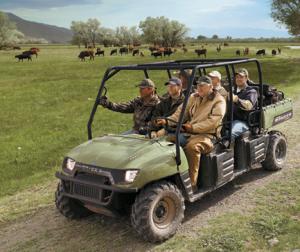












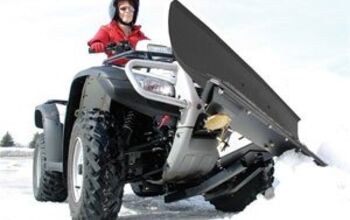
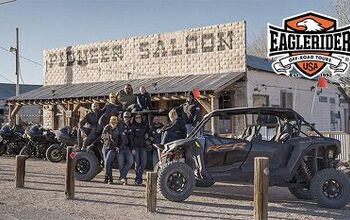
![MIT Student Develops Off-Road Wheelchair [video]](https://cdn-fastly.atv.com/media/2022/10/24/8744100/mit-student-develops-off-road-wheelchair-video.jpg?size=350x220)
